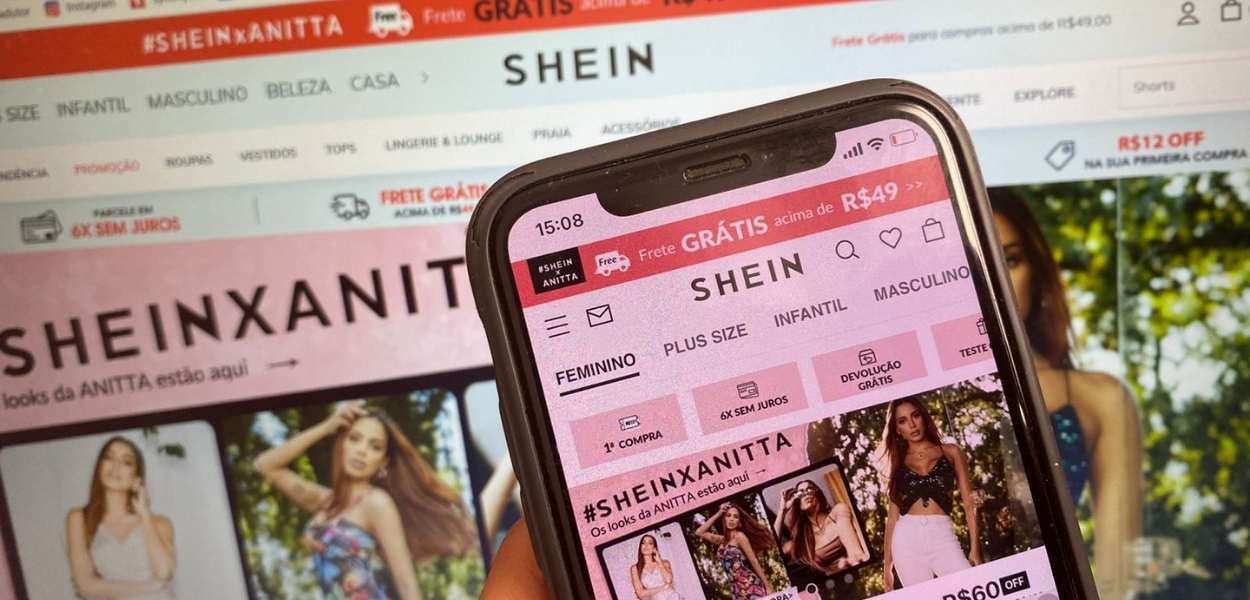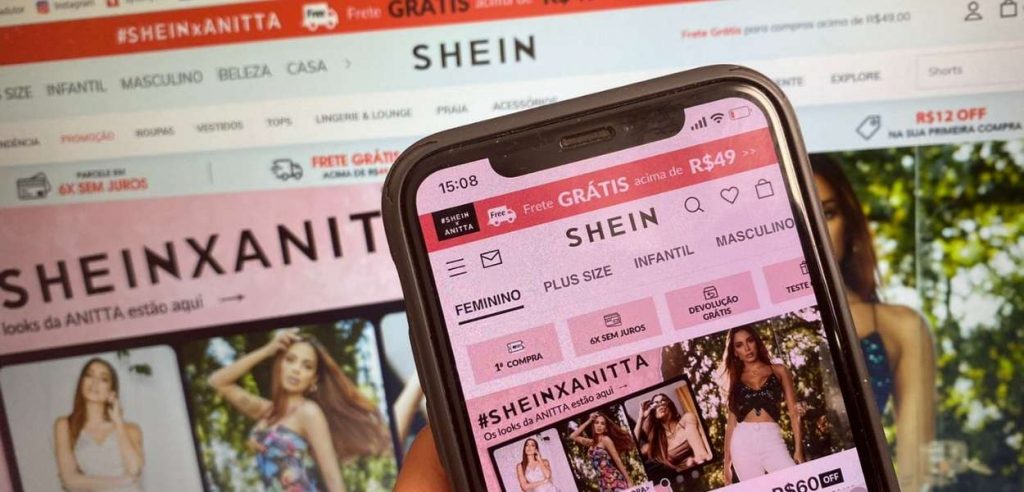Shein employees are paid less than 1 cent a piece working 18 hours a day. That’s what the new Channel 4’s documentary says. According to it, workers at the company’s partner factories have long and exhausting working hours, while having just one day off a month, in addition to producing 500 pieces of clothing a day. Insane? Yes. Reality? Unfortunatly, also yes!
If fast fashion wasn’t harmful enough, now we have an even major issue: ultra-fast fashion. The term was coined due to the famous Chinese empire – which has only been growing.
The scandals involving Human Rights and sustainability are already known to most people in the fashion industry. The problem is that they don’t stop there. Or rather, what I mean is: it’s not because they’re not in the headlines, that it’s not happening.
But, recently, the brand returned to the fashion world’s main news and, this time, with data that shows that the company has not changed in recent times. Clothing is never just clothing. The people involved, their working conditions and the material used in the pieces’ production say a lot.
Let’s understand more about Shein and what is behind their cheap clothing.
Where Did Shein Come From
A few years ago, when one was asked about fast fashion brands, they would say Zara, H&M, Forever 21 and many others. Who would’ve imagined that a Chinese company would take the best seller spot?
Having a vast brand like Shein selling this much is not the best for social impact and sustainability. But don’t worry, we’ll dig into that later on.
First, let’s better understand how the Shein empire started.
According to Chinese-language news daily BJ News, in May 2021 and again in January 2022, Shein app downloads exceeded those of international e-commerce giant Amazon. The company’s numbers – in general – are pretty impressive.
Reuters reports estimated the company may have generated about Chinese Yuan Renminbi CNY100 billion (US$15.7bn) in revenue in 2021 as the Covid-19 pandemic shifted global consumption online.
Economically speaking, numbers are optimistic for this year as well. According to Morgan Stanley, Shein may post $20 billion in revenue in 2022. That’s enough to overtake Fast Retailing Co. to make it the world’s fourth-biggest apparel retailer.
Chris Xu founded the company in 2008 in Nanjing, China. Shein was more of a dropshipping business than a retailer in its early stages. The company was not involved in the design and manufacture of clothing. Instead, it sourced its products from a wholesale clothing market in Guangzhou.
In 2014, Shein acquired Romwe, a Chinese e-commerce retailer, becoming a “fully integrated retailer.” Currently, the company sells its products in 195 countries. Now, they work with all types of clothing pieces and accessories.
Ultra-Fast Fashion? What?
Fast fashion is not a new term and it’s been a while since the fashion industry is talking about its harm and issues.
Fashion Revolution, sustainable movements and human rights have been at the center of the discussion when it comes to this type of clothing production.
According to Earth.org, while clothing production has doubled, garment usage lifetime has decreased. So, people are buying more and using these pieces for a shorter time. Also, fast fashion emits a double amount of CO2 compared to aviation and shipping combined.
So, did we really need ultra-fast fashion? Well, I don’t think so. But here is what you need to know about it.
For years, fast fashion has been increasing its production. Adding more pieces to its websites and collections in a shorter period. With Shein’s growth, older companies also saw that they needed to push their production – more than they were already pushing before. Therefore, we began having a sort of unhealthy competition.
According to The Guardian, only this year, H&M has added to its US website 4,414 new styles. While Shein has added 315,000 new pieces. Their prices range, but some sections make fashion lovers’ eyes pop: the under U$ 5 and U$1.99. However, if the prices are so low there’s a thing you should know: somebody in the production chain is paying for it.
To summarize, ultra-fast fashion retailers take everything bad from fast fashion and speed it up.
The Shein Boom
Fashion often messes with self-esteem. People want to feel good and be fashionable, so it ends up being addictive. And that’s why fast fashion brands are so successful.
However, out of nowhere, we started hearing about Shein. But, how did it become so popular?
TikTok & Fashion Hauls
Everything that hits TikTok goes viral. Whether it be a dance, a salmon bowl recipe, or purchases unboxing.
Influencers and fashion lovers’ hauls started on YouTube, but it soon hit the short-video app. It has played a massive role in Shein’s growth.
People from all over the world started to create the videos opening their newest Shein’s purchased and it soon began appearing on everyone’s For You page.
When they saw someone buying a fashionable piece at a price below average, people started to access e-commerce more and buy their dearest items.
In addition, what we see on the fashion catwalks is already available for purchase a few days after the show. Updates are constant and “see now buy now” has become the motto of these hauls.
Trendy Clothing At Affordable Prices & Inclusive Sizes
We need to be honest, every coin has two sides and with Shein, it would be no different.
There are two positive points that, despite much controversy, show a certain evolution in various discussion agendas. Let’s go through both now.
Having pieces similar to the ones we see at fashion shows at affordable prices has never been common. The democratization of trends is a great positive point, as it allows more people to be “in fashion”, using what is trending at the moment.
A little scroll on their website and you can already see the Miu Miu mini skirt, the similar micro bags inspired by the big brands and even a replica of the famous Prada boots.
Let’s put aside all the controversy that generates the copy – or rather, inspiration – of high-end and luxury pieces. What we can say is that not all people can afford to buy luxury fashion. However, most of them want to use the latest trends and, in this scenario, Shein has become a viable alternative.
Another thing of paramount importance is the size inclusion. For people who never fit the exclusive pattern of pieces XS to LL, Shein has shown that trendy and fashionable clothing can come in large sizes. Especially because, regardless of the person’s size, everyone has the right to find hyped pieces that fit their bodies.
As much as not all pieces come in all sizes, Shein has given the possibility to people who previously couldn’t find what they wanted. I’m talking about pieces that are easily found in smaller sizes, like tights and crop tops.
I’m not saying that Shein is the only one to do these two things. However, they do combine them on a scalable size.
Gen Z: Fighting For What Convenes
Hope no one gets mad at me for saying this, but Gen Z chooses the social flags they want to defend.
When we talk about the LGBTQIA+ community, body positivity and inclusivity, Gen Z has settled an example. With great determination, they cry out for what they believe in with all their strength – and that’s amazing.
However, they sin in some ways!
There is no shortage of information online about sustainability these days. Just log on to a news site and you may see our planet’s health alarms blaring in full swing. But while some young people are very aware of this and are taking inspirational actions, others are simply opting for a more trendy wardrobe.
So, the truth is: Gen Zs do lead the charge in some of the most pressing matters – but, sometimes, only on the ones that convene.
How – we believe – they produce their product
Transparency is a word that Shein might have never listed.
It’s almost impossible to find data about their production process and products. However, complaints are not few.
Last year, BBC released an article saying that Shein’s workers have a 75-hour week shift. Besides that, their buyers often complain about the pieces’ quality and disposable characteristics. This leads us to understand that their materials are not reliable.
Despite all the denunciation, you may not find much information on its production process and supply chain, even if you dig on the internet.
18-working hours a day? Less than 1 cent per piece?
I wish I had written this headline with information that I came up with. But, truth is, it’s a reality that I thought I would see only in my worse nightmares.
A few days ago, Channel 4, a British network, released an investigation recently. They sent an undercover worker into two factories in Guangzhou, China. Both of them supply clothes to the fast fashion giant.
There, it was reported that employees, producing parts for Shein, would be in exploratory working conditions receiving less than 1 cent a piece, with a workload totaling up to 18 hours a day and only one day off per month.
According to The Cut, the network found out that, in one of the factories, the workers receive a base salary of 4,000 yuan per month to produce 500 pieces of clothing per day. Roughly, that corresponds to US$556, which means less than 1 cent per piece. On the other one, they get something around 4 cents per piece.
“In one factory, the outlet found women washing their hair during lunch breaks, and workers were penalized two-thirds of their daily wage if they made a mistake on a clothing item,” affirms The Cut’s article.
This situation violates China’s labor laws, but… what did Shein say about it? The same as it said in previous years when accused of illegal labor practices. The company affirmed to Business Insider that, “Any non-compliance with this code is dealt with swiftly, and we will terminate partnerships that do not meet our standards.”
Takeaways
All things in the world have two sides. But we must place them on a balance so we can understand if we should move on with them – or not.
It’s quite complicated to say, we must kill fast fashion. It involves a lot of people, economic aspects, etc. However, sustainability and human rights must be at the top of the priority list. And, unfortunately, in the current system, I don’t think that they are even on the list.
Fast fashion does democratize fashion. But, on the other hand, what we also got is influencers buying tons of clothing to do their hauls. Clothing constantly goes to landfills and worker exploitation.
Do consumers know that behind these brands there are people – mostly women – working exhaustively every day and earning – much – less than minimum wage? Do people know that the working conditions in sweatshops are precarious and dangerous? Do they know that one of the biggest reasons for water contamination in the world is textile dyeing?
If they know, people are choosing to deny it. So, what can we do?
Firstly, raise awareness. Tell the whole world about fast fashion – and Shein’s – dangerous. Then, leave the decision-making to them. But, what I advise is: don’t put shopping before your values!






